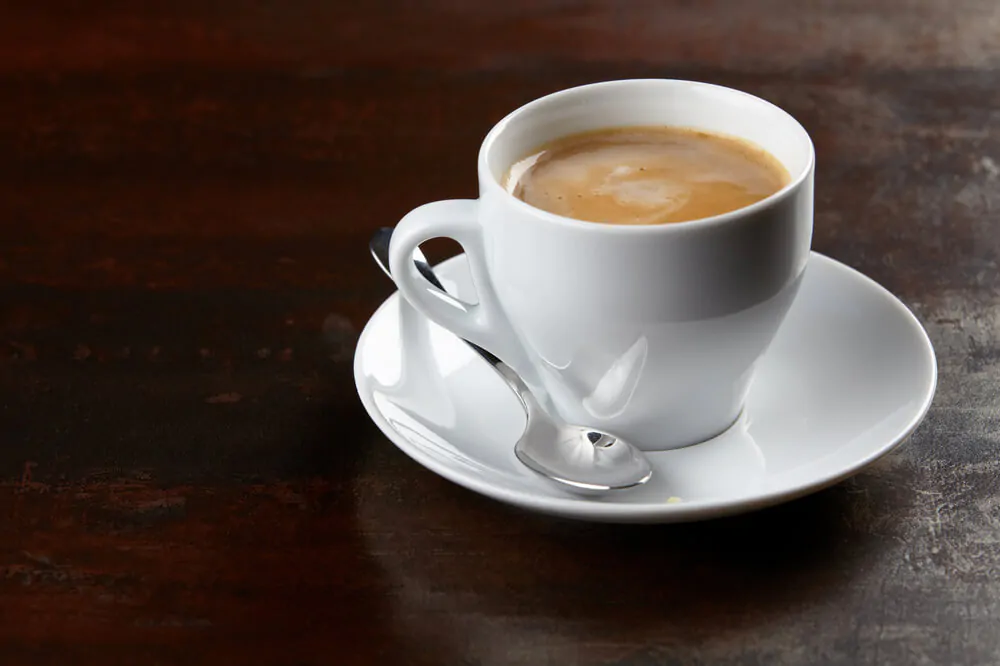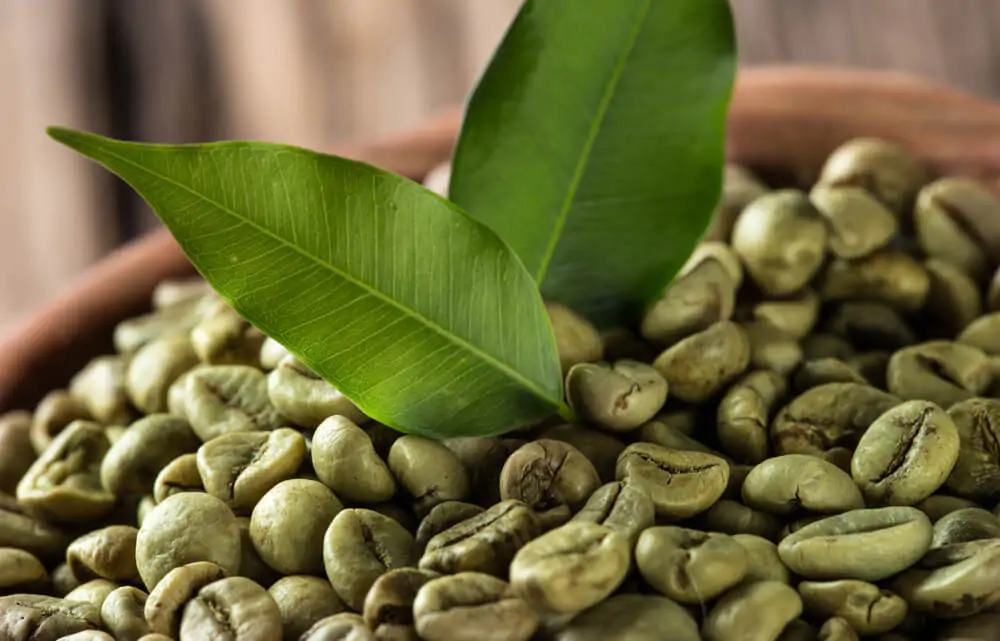How is decaf coffee made and is decaf coffee really caffeine-free? Learn more about the decaffeination process by reading below!

If you are anything like me, you have trouble getting out of bed without your morning Arabica or Robusta cup of coffee. Regular coffee has a lot of caffeine that wakes me up in the morning. I genuinely look forward to the smell of roasted coffee every day.
On the other hand, I am also aware of the health risks of the amount of caffeine I consume. Therefore, I recently switched to drinking decaf coffee. And if truth be told, I don’t notice the difference in taste with some of the best decaf coffees.
That got me thinking, how do they make decaffeinated coffee anyway?
How Much Caffeine Is Too Much Caffeine?
First, it is important to take a closer look at how much caffeine is too much. A typical cup of coffee will have between 80 and 100 mg of caffeine. According to information published by the Food and Drug Administration (FDA), you should limit yourself to no more than 400 mg of caffeine daily, which is between four and five cups of coffee.
You may notice that you develop jitters if you drink too much caffeine. Caffeine can also increase your heart rate and blood pressure. Even though caffeine will block adenosine receptors, preventing you from feeling tired, it can lead to side effects as well.
One of the most significant side effects of regular caffeine intake of caffeine withdrawal. If you have become dependent on caffeine and go for a while without it, you may develop severe headaches. You could also start sweating, develop skills, and have issues controlling your emotions.
If you want to reduce your caffeine intake, drinking decaf coffee may be a good choice. So, now, let’s actually look at just how they make decaffeinated coffee.
Popular Decaffeination Methods
Based on our research, decaffeinated coffee is prepared in a few different ways, which aim to preserve the flavor while mitigating the effects of caffeine.
1. Carbon Dioxide Decaffeination
Carbon dioxide transforms into a supercritical fluid when compressed under high pressure over room temperature, i.e., one combining the properties of gases and liquids. The carbon dioxide decaffeination requires soaking the green coffee beans in water and loading them into an extractor. When the supercritical carbon dioxide combines with water, it can dissolve and removes caffeine from green coffee beans.

Then, the liquid carbon dioxide is pumped into the green coffee beans to remove the caffeine without affecting the flavor compounds. After that, the liquid carbon dioxide full of caffeine is transferred to a separate vessel where the pressure is released. The liquid carbon dioxide returns to its gaseous state, leaving caffeine behind.
Expect roasted, dry green coffee beans.
Step 1: Soak
Soak the green coffee beans in water and load them in an extractor.
Step 2: Seal
Seal the extractor and pump the liquid carbon dioxide into the green coffee beans at high pressure to remove the caffeine.
Step 3: Transfer
Transfer the liquid carbon dioxide full of caffeine to a separate vessel, the absorption chamber.
Step 4: Release The Pressure
Release the pressure. The liquid carbon dioxide will return to its gaseous state, leaving the caffeine behind. The liquid carbon dioxide acts as a “solvent” by removing the caffeine within the green coffee beans without harming the flavor compounds.
What you are left with is a decaf batch of beans.
2. Direct Solvent Decaffeination
Solvent decaffeination requires soaking green coffee beans in a solvent to eliminate the caffeine, either directly or indirectly.
In direct solvent decaffeination, the green coffee beans are steamed to open their pores. Then, you can soak them in a solvent like Methylene chloride and ethyl acetate. These are the two most commonly used solvents, as Benzene, a once-popular solvent, is potentially carcinogenic.

Step 1: Steam
Steam the green coffee beans for about 30 minutes to open their pores and make them more receptive to adding a solvent.
Step 2: Soak
After steaming, soak the green coffee beans in a solvent. This process removes caffeine since it dissolves in the solvent, but some flavor compounds are also removed, which can affect the coffee’s flavor. For this reason, indirect solvent decaffeination is a good alternative.
3. Indirect Solvent Decaffeination
In indirect solvent decaffeination, green coffee beans are soaked first in hot water to remove some of their caffeine and flavor compounds. After that, they are removed from the water and then soaked in a solvent. The solvent will absorb most of the caffeine without impact on flavor.
The water and solvent are then separated. Then, the green coffee beans are added back into the water to reabsorb some of the lost flavor compounds. As with the direct solvent decaffeination method, they are dried and roasted.
Step 1: Soak
Soak the green coffee beans in hot water for several hours to remove some of their caffeine and flavor compounds.
Step 2: Add Solvent
Remove the green coffee beans from the water, then soak them in a chemical solvent (methylene chloride or ethyl acetate) for about 10 hours.
Step 3: Add Back To Water
Remove the green coffee beans from the solvent, and then add them back into the water to reabsorb some of the flavor compounds. Then, your result will be a batch of coffee decaffeinated.
4. Swiss Water Decaffeination
Swiss water decaffeination and French water decaffeination are popular too. Swiss water decaffeination requires soaking green coffee beans in hot water to remove the caffeine, along with some flavor compounds. The extract is then passed through a carbon filter, selectively removing the caffeine.
You can use flavor-infused water to remove the caffeine from a batch of green coffee beans. It is saturated with flavor compounds, so only caffeine is removed from the new batch. This process preserves the original flavor.
Here is the water decaffeination method most commonly associated with Switzerland.
Step 1: Soak
The Swiss water process starts by soaking the green coffee beans in hot water to remove caffeine and flavor compounds.
Step 2: Filter
Remove the caffeine molecules from the extract by passing it through a carbon filter. Use the flavor-infused water for decaffeinating a new batch of green beans. And that’s the final step in Swiss water decaf.
5. French water decaffeination:
The French water decaffeination method differs slightly from the swiss water method.
Step 1: Soak
Soak the green coffee beans in hot water for up to 24 hours to remove some of their caffeine and flavor compounds.
Step 2: Dry
Remove the green coffee beans and dry them.
Step 3: Filter
Remove the caffeine from the extract by passing it through a carbon filter. Add the dry green coffee beans to the caffeine-free and flavor-infused water to absorb some flavor compounds.
Is There Any Caffeine In Decaf Coffee?

Contrary to popular belief, decaffeinated coffee or decaf coffee is not 100% decaffeinated. For a coffee to be considered “decaffeinated,” you must remove 97% of its original caffeine content. This is hard to achieve, no matter what decaffeination method you use.
The amount of caffeine will be determined by the effectiveness of the decaf process. Nevertheless, the small amount of caffeine in decaffeinated beans is usually insufficient to cause any of caffeine consumption’s positive or negative effects.
Thus, if you are a coffee drinker worrying that the high-quality decaf you bought in your local coffee shop will keep you up all night, then worry not. The trace amounts of caffeine left in your cup of decaf are unlikely to have much of an effect on you. However, if you are looking to cut all caffeine out of your diet, or you have a caffeine allergy, then decaf might not be the answer.
Who Should Choose Decaf Over Regular Coffee?
As mentioned above, individual caffeine tolerance can vary, but healthy adults should not consume more than 400 milligrams (mg) of caffeine daily, the equivalent of three to four cups of coffee.
Consuming excessive amounts of caffeine may lead to increased blood pressure and lack of sleep, which can also increase the risk of heart disease, heart attack, and stroke. It can also overwhelm the central nervous system and cause anxiety, restlessness, or trouble sleeping, especially in sensitive people.
For this reason, people sensitive to caffeine should limit their regular coffee intake or switch to decaf coffee or tea. People with certain medical conditions need to restrict caffeine consumption, including those taking prescription medications that can interact with caffeine. In addition, it is also recommended for pregnant and breastfeeding women to limit their caffeine consumption.
Children, adolescents, and people with anxiety disorders or those who have trouble sleeping are also advised to do so. And the good news is that coffee companies are investing in this area, with there now being little difference in taste between decaffeinated and caffeinated coffee.
Choosing Decaff And Caffeine Withdrawals
If you choose to change your morning cup of coffee to decaf instead of coffee that has gone through standard processing methods, then you might be suffering from caffeine withdrawals.
Everyone experiences caffeine withdrawal differently. Some of the most common symptoms include emotional lability, headaches, breathlessness, shakes, and sweating. You may also have digestive issues.
Even though caffeine withdrawal manifests differently from person to person, caffeine withdrawal usually lasts from a few days up to a week. It is one of the key reasons many recommend that you wean yourself off caffeine.
Thus, don’t go cold turkey if your body is used to five double espressos. Instead, consider the health benefits of substituting a few of those espressos for decaf of black tea. From there, you can further adjust your caffeine consumption as is necessary.
